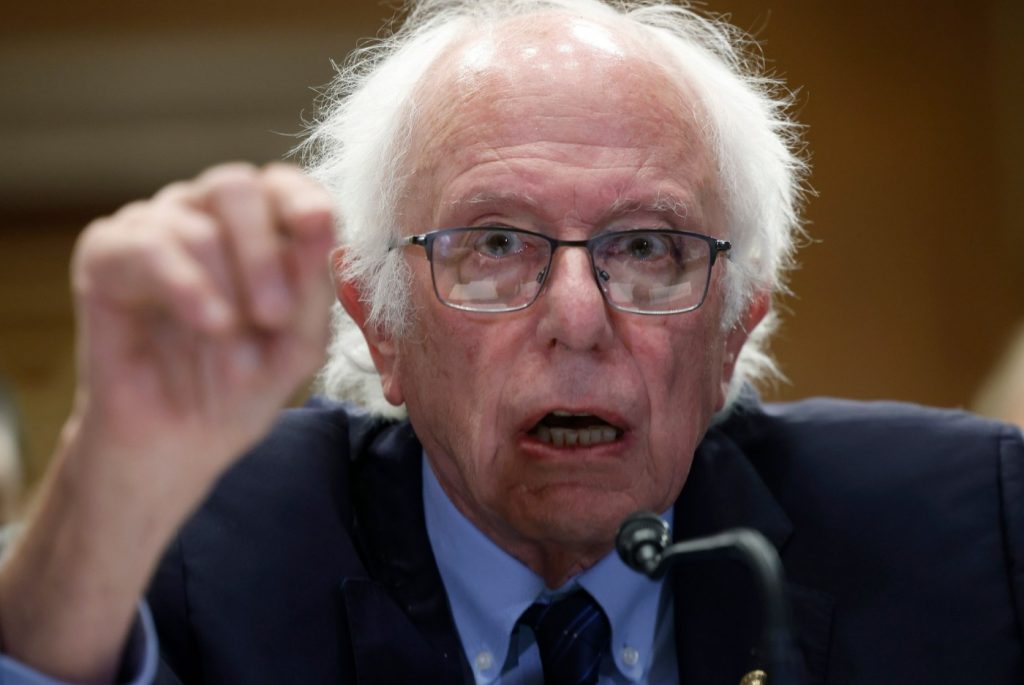Lia DeGroot | (TNS) CQ-Roll Call
WASHINGTON — The CEO of Novo Nordisk is set to appear before a Senate panel Tuesday to be grilled on the high cost of Ozempic and Wegovy, the popular drugs used to treat diabetes and obesity.
But health economists say it’s unlikely that congressional pressure will be the driving force to get the prices down.
Sen. Bernie Sanders, I-Vt., who chairs the Senate Committee on Health, Education, Labor and Pensions, has established himself as a perennial critic of pharmaceutical companies during his time helming the committee. He initially had threatened to subpoena the president of Novo Nordisk, Doug Langa, to testify before the committee. The company ultimately agreed to send CEO Lars Fruergaard Jørgensen to field questions on price.
Sanders has repeatedly dug in his heels on what seems like a straightforward question: Why does Novo Nordisk charge so much in the United States but much less in countries like Canada and Germany?
This week, Jørgensen will likely tell the committee that it’s a bit more complicated than that. In a statement to CQ Roll Call on Friday, a Novo Nordisk spokesperson touted actions that the company has taken to make Ozempic and Wegovy, both GLP-1s, more affordable.
Novo currently sells Ozempic, the version to treat diabetes, for $968.52 per month. It sells Wegovy to treat obesity for $1,349.02 per month, according to its website. By comparison, Ozempic has a list price of $59 per month in Germany, $122 per month in Denmark and $155 per month in Canada, according to the global drug pricing and market access database NAVLIN.
The spokesperson said more than 80 percent of Americans with insurance pay $25 or less per month for Ozempic.
“Unfortunately, even when we lower our prices, too often patients in the United States don’t receive the savings — this is a problem,” the spokesperson said. “We appreciate that it is frustrating that each country has its own healthcare system but making isolated and limited comparisons ignores this fundamental fact. What remains constant is the indisputable value and cost savings Novo Nordisk medicines bring to patients, healthcare systems and society.”
Sanders’ long-running fight with the pharma industry, however, goes beyond individual drug prices.
“The business model of the pharmaceutical industry is unsustainable, from a humane perspective and from a financial perspective,” Sanders said Tuesday during a roundtable with drug pricing experts.
Market forces
Health economists and industry watchers say lowering the price of the drugs is inevitable, but it won’t necessarily be Congress that makes it happen.
At the roundtable, Sanders announced he had spoken with generic drug companies that told him they could make a version of Ozempic that could be sold for $100 per month.
Brian Reid, who helms the health consultancy Reid Strategic, said while that could be true, he thinks Sanders is missing the point. He said nearly all branded medicines could be sold as generics for that price, but it wouldn’t leave room for innovation.
“Indeed, the force that is going to drive prices down to $100 is not government intervention but competition,” he wrote in a newsletter Wednesday. “There might be 16 new obesity meds on the market within five years. Prices are only going in one direction.”
Lindsay Allen, a health economist at Northwestern University, said while the hearing could lead to renewed calls from lawmakers for price controls, the market is already moving toward lower costs. She pointed to Eli Lilly’s direct-to-consumer platform that launched last month, LillyDirect, where it will sell its obesity medication Zepbound for $399 a month.
“What’s going to be the most effective lever in the short term is the market dynamics of what’s going on with competitors,” she said.
Allen said Novo charges such a high price tag in the United States because consumers are largely willing to pay that price.
“It’s the most basic example of supply and demand,” she said. “We already can’t keep up with supply of the GLP-1s; so many people are buying them that there are shortages.”
One solution to get the cost down, she said, is for the Centers for Medicare and Medicaid Services to add them to the list of drugs whose prices they will negotiate under the 2022 budget reconciliation law. In her view, she said it’s likely that the drugs get added to the negotiations down the line.
“Up until this point, no one’s really put pressure on the manufacturers or on the federal government to use those mechanisms in regard to the GLP-1s,” she said.
During the hearing, she said she’s expecting lawmakers to ask pointed questions aimed at getting Jorgensen to justify the high prices of the drugs.
“What I’m hoping will also come up in the hearing is the fact that it actually costs very little to manufacture these drugs,” she said.
Melissa Barber, a health economist at Yale University, said during Sanders’ roundtable Tuesday that her research has shown that companies could manufacture GLP-1s for as low as $5 per month. She came to that conclusion by examining the cost of the active pharmaceutical ingredient, cost of injection device, overhead costs, taxes and markups.
“Novo Nordisk and Eli Lilly are going to be just fine,” Barber said. “I would still anticipate them to have the highest profits of any drug company in the world, even if prices were reduced to [$50 to $100].”
Getting Medicare to widely cover obesity drugs has been an uphill battle.
Lawmakers have attempted to achieve coverage via a bill known as the Treat and Reduce Obesity Act, which is sponsored by Reps. Brad Wenstrup, R-Ohio, and Raul Ruiz, D-Calif. A condensed version of the bill was approved by the House Ways and Means Committee earlier this year. Under the amended version, Medicare could cover the drugs for people with related conditions whose insurance previously covered the medication.
Allen said getting the medications covered by Medicare could also be dependent on how well the drugs save Medicare on other health care costs for conditions related to obesity, such as cardiovascular issues.
“If CMS were paying the prices that they’re paying now for the patients they’re scheduled to pay, it would be cheaper for CMS to just buy Novo Nordisk than it would be to pay what we’re paying just over the next two years,” Barber said.
___
©2024 CQ-Roll Call, Inc., All Rights Reserved. Visit cqrollcall.com. Distributed by Tribune Content Agency, LLC.


